Can I Bring My Pets to Ecuador? Flights, Litter, Culture Shock
Our pets often become a part of our families. So when we relocate, it opens up the question of how to move them to our new city. In this post, we’ll cover moving pets to Ecuador, how to fly with a pet, litter training a dog for apartment living, and how a new pet can help with culture shock.
Bringing Pets to Ecuador?
Can I bring my pet to Ecuador? It’s a great question. The information online is kind of spotty. We have two sources for the content in this post.
- A fellow Canadian Expat (living in Cuenca) who has moved her pets to-and-from-and-to Ecuador. Obviously, she knows what’s needed.
- A relocation law firm here in Cuenca, Ecuador: Idrovo & Velastegui Abogados (see contact info at the bottom of the post).

Holly Walker, Canadian Expat Living in Cuenca
Holly is a reader and fellow Canadian (and now fellow Cuencana) and she offers some insight into bringing pets into the country.
We brought our cat with us when we initially moved and our dog (purchased in Cuenca last year) has been to Saskatchewan and back.
As far as getting an animal into Ecuador goes it’s a fairly straightforward process — as long as you follow all of the Ecuadorian guidelines. I phoned the Ecuadorian embassy in one city and the Ecuadorian consulate in another just to cross-check information. When we brought our cat we weren’t asked for any of the paperwork. However, when we came back with our dog they checked everything. So there’s just no telling…
Any problems we did encounter were with the airline(s) themselves, so my advice to anyone considering bringing their pet is to make sure you double or even triple-check any information they give you.
I would avoid at all costs sending a pet as cargo, because anything flying cargo has to go through customs so there is the potential for your pet to end up siting in a cargo facility for hours or even days. If they are small enough have them in the cabin with you (some airlines still allow it) or fly them as checked baggage.
Idrovo & Velastegui Abogados – Cuenca Law Firm
The law firm that we recommend here in Cuenca (without any financial incentive, by the way) gave me this link.
They commented that this site is: “very helpful for persons with questions about bringing their pets to Ecuador from the U.S.” http://www.aphis.usda.gov/regulations/vs/iregs/animals/animal_ecuador.shtml
The law office here in Cuenca, that specializes in Visas and Relocation. A friend of ours, also an expat, works in the office. She will handle your email. You can address your email to Rebecca McCleskey. By the way, Abogado is lawyer in Spanish.
Here is the contact information for the law firm:
Idrovo & Velastegui Abogados – Cuenca Law Firm
Dr. Grace Velastegui, Attorney at law
Luis Cordero 6-41 y P. Cordova
Cuenca – Ecuador
(593) 7 407-9358 Phone
(593) 996 110 451 Cell
What’s your experience? Have you brought your pets? Or are you planning to?
What I Learned About Flying With a Dog (Across Continents)
Flying with a dog wasn’t as easy as we thought it would be. Especially because our dog was too large to fit in the cabin with us.
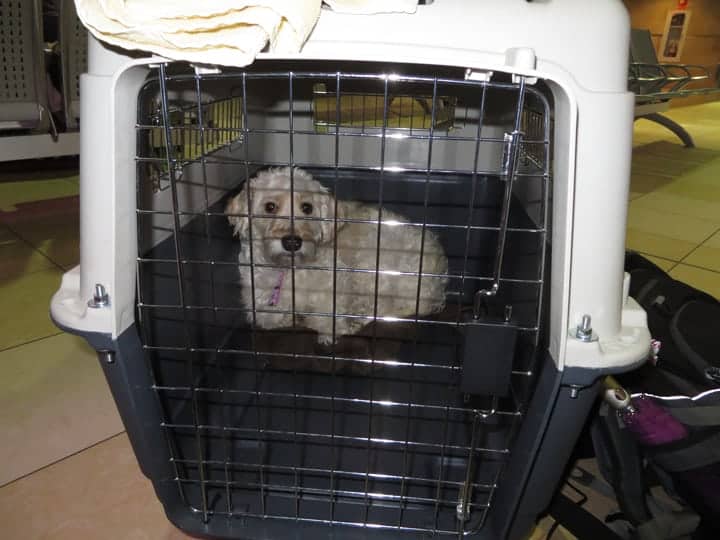
We recently moved from Ecuador (South America) back to Canada with our dog and it took a huge amount of planning! There were a lot of details to figure out.
We were traveling through 3 countries, each with its own regulations on pet travel. And then there were the airline regulations as well.
National flights (within the United States for example) may be pretty straightforward, but things can get complicated when you need to travel to another country.
These are the 3 major factors to consider:
- Health regulations
- Time of year
- Flight/airport regulations
Health Regulations
When it came to flying with a dog we had to comply with country and airline health regulations.
This included vaccinations and papers to prove the physical health of our pet. It also included the specifics on what kind of carrier was allowed and the other supplies needed to keep our dog comfortable during the flight.
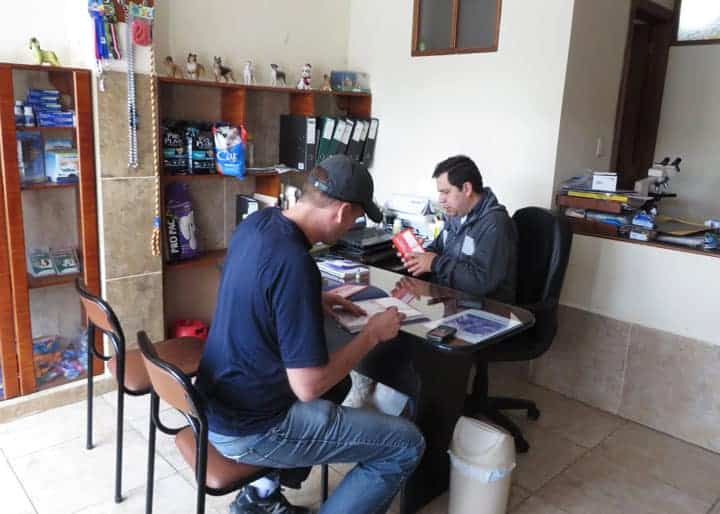
Some of the documentation we needed had time limits. In arranging our flights out of Ecuador one of the documents (vet certificate) had a 7-day expiration. And both of the government-issued documents for national and international travel had a 48-hour expiration. Factoring this into our plans shaped our travel itinerary.
We also had to get the papers translated into English for the US and Canadian airports we would travel through.
We had to check the type of carrier required by the airline we were thinking of flying with. The regulations were strict and needed to be met – or our pet could have been rejected causing us to have to reschedule our flights.
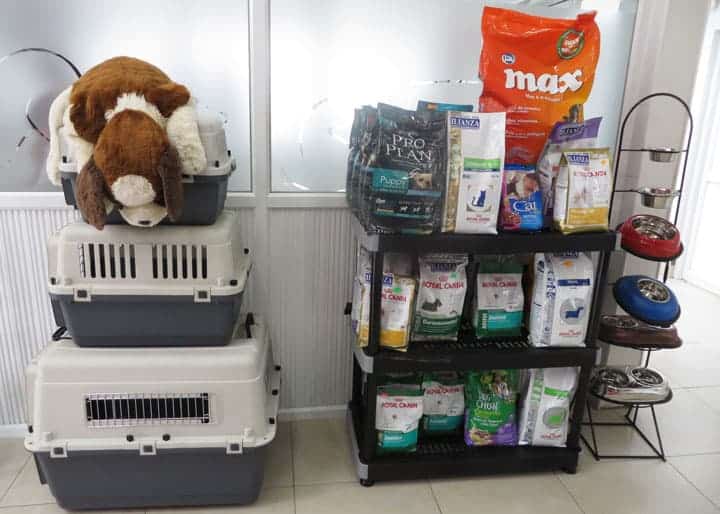
Our carrier had to have ventilation on all 4 sides, metal hardware (including screws) the proper door enclosure, absorbent material, handles on the top and both sides, and food and water dishes.
We had to make our own screws (we cut a threaded rod and bought washers and lock nuts) because it came with plastic and we couldn’t find the proper sized ones in Cuenca. We also had to label the carrier with “Live Animal” stickers in English and Spanish, use zip-ties on the 4 corners and include a pouch with food and identification/contact info.
Tip: Check the airline website well in advance of your desired travel time because it could take you longer than you think to locate an acceptable dog carrier in your area. At least that was our experience in Cuenca Ecuador.
If you can’t find one in your area you could order one on Amazon and have it shipped to you. You can also order a travel packet with the odds and ends needed (zip-ties, food pouch…) which could save a lot of running around.
Flying With a Dog: When?!
If your dog is too large to travel in the cabin with you, time of year matters!
This came as a surprise to us. We had to make sure that the location of each airport (5 altogether) along the way was neither too hot nor too cold for the dog. Many airline carriers have rules and will only accommodate flying with a dog during specific months to ensure the safety of your pet.
Tip: Don’t assume that you can just plan your flight for any time during the year, you need to do your homework well in advance.
We checked available flights and then went to the company website to make sure they carried pets. Then we had to check the window of time open for safe pet travel with each airline.
Because we were checking with more than one company (trying to find the best price) this became a headache, but was necessary because we didn’t want any major “surprises” getting in the way of our pet making the trip with us.
Flight/Airport Regulations for Pet Travel
Not all airline carriers carry pets. And there are some that do, but only on certain planes.
Because we were flying with a dog internationally we had a number of stopovers and needed to change planes. This could have created a problem because the flight we were landing on may have carried dogs, but the flight we were transferring to, may not have. We ran into that problem when looking into flights from our last stopover in the U.S. to our destination city in Canada.
Before we booked our flights we had to check each flight specifically to make sure that type of plane would accept our pet. To do this, we went to the airline website and checked the type and the number of each plane noted on our proposed itinerary. We realized that it was very important to read the “fine print.”
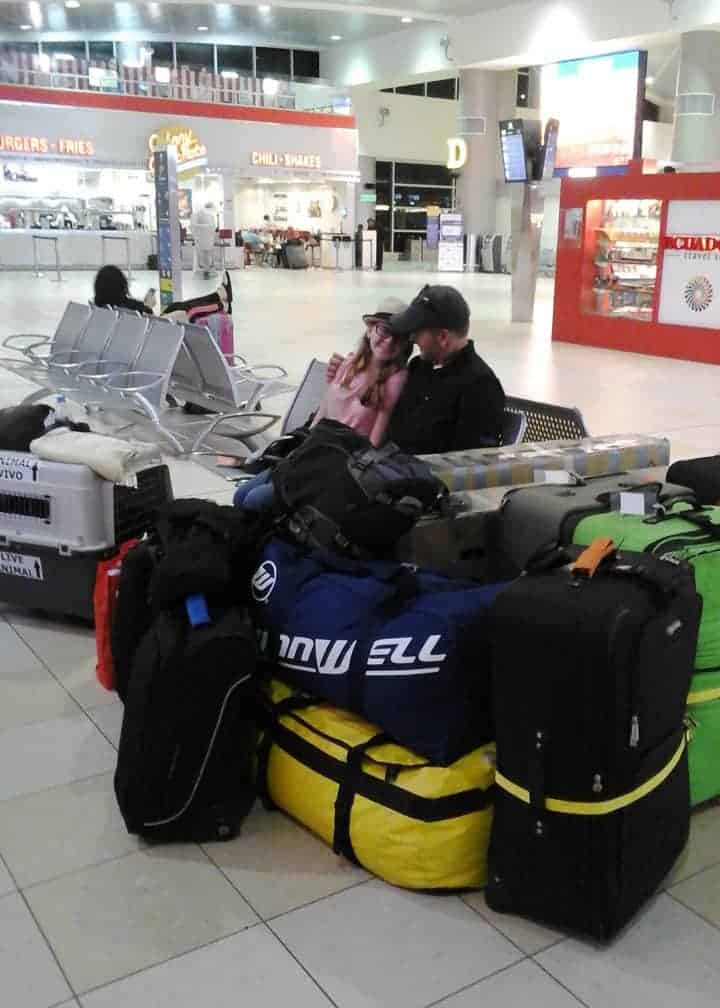
Then we had to figure out if we would need to pick up our pet during our stopover or not. At some stopovers, we needed to get our pet, take her to the pet relief station, feed and water her, and give her some love and exercise.
At others, we didn’t. It was also helpful to check out maps of the airports (locating relief areas) we would be going through. This saved us time and confusion during our travel.
We also needed to check our dog earlier than normal luggage, so we had to allow extra time for that.
Start Planning Well In Advance Of Desired Travel Time
As you can see, when flying with a dog there was a lot to consider! We needed to plan well in advance and be prepared for bumps along the way.
Tip: If possible, it’s best to go to the airport and talk with the airline to make sure your pet will be allowed on the flight.
We learned this the hard way. We had called the airline we were flying out of Cuenca with and pre-registered our dog for the flight (a necessary step with all flights.) We were told everything was good to go.
When we called back a few days before the flight just to make sure (also an important step) we were told that someone else had taken our spot! This created some panic in our family.
We decided it would be best go to the airport to make sure, it turned out everything was fine and our dog was still scheduled to make the flight.

The problem with calling the airlines was that their call centers are outsourced. This led to confusion because, as we found out, the person on the other end didn’t know what they were talking about.
We were told the airline had changed their policy and no longer carried pets from Cuenca to Quito, which wasn’t true.
This kind of mix-up can be very frustrating when trying to make important travel plans because you think you are talking with informed employees, but you may not be. Check and double-check everything.
Path Of Least Resistance
In trying to tie all of these details together (including 4 flights) we found it best to fly with Delta for the majority of our flight. They had the most pet friendly flights, and it saved a lot of headaches. We didn’t have to worry as much about changing airlines (and meeting their different regulations) as we managed our pet, and our mountain of luggage.
It was more expensive to go that way, but peace of mind is worth a lot. And because we had so much luggage, traveling first class (a first for us) cost less than coach because of the higher luggage allowance.
Our trip back took over 24 hours (including stopovers) and to have the extra leg room (Bryan is 6’3″) was pretty nice. It also meant we got off the flights quicker so we could get to the dog to take care of her. Using this trick saved us hundreds on our flights.
It was our first time flying with a dog and we were concerned about her. She did great, and it was well worth all the planning and headaches!
We got her the month after we moved to Ecuador. She shared everything with us over our 6 years there, leaving her behind didn’t feel like an option. Our daughter was 8 when we arrived in Ecuador, having to leave was hard enough, we didn’t want to leave her BFF behind.

Having our dog back in Canada with us is wonderful!


Have you had any experience flying with a dog? Please share your tips by commenting on this post.
How to Litter Train a Puppy (For Apartment Living)
When we moved to Ecuador our daughter was lonely because she didn’t have any friends, and she was frustrated because of having to get used to a new language. She really wanted a puppy, and we felt it was important to get her one for companionship.
One of the biggest problems that came to my mind was my lazy attitude toward taking the dog out multiple times each day to “go”. We were living in an apartment, so there was more involved than simply opening the door and letting the dog out to do its business. So I decided to litter train the dog.

I didn’t even know it was possible to litter train a dog, until I was doing research on dog breeds that do well in apartments. So I decided to give it a try and now, two years later we have a dog that never has to go out to “go”.
She just does her thing in the litter box and I scoop it out once a day, no mess around the house or yard, everyone is happy and my lazy attitude remains intact.

What I Needed
- A crate (for the puppy to sleep in)
- A large litter box (I use a plastic storage container)
- Newspaper (to start, then I switched to cat litter)
- A lot of patience and a large portion of stubborn piled on the side
How I Litter Trained Our Puppy
- Lined the crate with newspaper, and put the puppy in it to sleep
- Lined the litter box with newspaper
- First thing in the morning took some soiled newspaper out of the crate and rubbed the urine on the paper in the litter box so the puppy got the scent of where to “go”
- Took the puppy out of the crate and put it in the litter box, didn’t let it out till it “went,” used a command “go now” so the dog associated the command with “going”
- After the pup ate, repeated step 4, after the pup played a lot repeated step 4, after the pup drank a lot repeated step 4, after the pup took a nap repeated step 4, when I saw the pup sniffing and circling the floor repeated step 4, when I saw the pup looking sideways at me repeated step 4 (just kidding, but that’s how I felt)
- Had patience and was stoic in my stubbornness because the pup kept trying to jump out of the litter box, I had to keep putting it back, or blocking escape attempts, and I had to keep repeating the command to “go now”.
- Was prepared for accidents, I forgot when to put the pup in the box and the pup had accidents. It helped to reprimand the pup (with a stern “NO”) and take some of the accident to rub on the paper in the litter box, then put the pup in the litter box and repeat the command. Even if the pup didn’t go again this helped reinforce the association
After the pup was trained I tried switching to cat litter. Our pup tried to eat the litter, so I had to keep using newspaper and testing with the litter until she was old enough to train not to eat it.

If you have any tips about traveling or making living abroad easier with a pet, please share by commenting on this post.
How a Little Puppy Almost Eliminated Culture Shock in Ecuador
In this post, I’ll share how we helped our daughter deal with culture shock when we moved to Ecuador.

Moving abroad is a pretty big undertaking. It’s exciting, exhilarating, fascinating and challenging. We have really enjoyed the experience. Our emotions have run the whole gamut of what would be expected to what just can’t be anticipated.
When moving abroad with children in tow it’s even more difficult to foresee what challenges they will experience emotionally, and how these things will be exhibited.
We expected that our daughter would miss her friends and family, our old house, and her old things. What we didn’t anticipate, was the effect that that not being able to communicate would have on her.
What Our Daughter Needed When We Moved to Ecuador
Our daughter has always had a need for never-ending input. When this need was no longer being fulfilled in the language area it caused her body to go into hyperdrive. It was hard to calm her down when we were out, and when we got home she was extra active and emotional.
She didn’t understand what was wrong, but it didn’t take us long to figure it out. We realized we had to do something to help her adjust.
Something to take the place of what she was not getting mentally, until she got used to not understanding, and could start to decipher the new language she was hearing.
Before we made our move we talked about the many positive changes this move would mean for our family. Like having more time together, learning a new language, experiencing a new culture and possibly getting a dog.
Well, this last one was her favorite and helped her see the move in a positive way. We told her that we would need at least a year in Ecuador before we would get a dog, and she was fine with this. We were wrong.
We Lasted One Month…
We decided to get a puppy after just one month. We were hoping that it would be what she needed to take her extra energy and emotion, we were right.
She was on top of the world; the puppy took all of her attention. She was so happy she forgot about the frustration churning inside her.

Chica, a fuzzy soft white ball of warm energy made it all better. The extra work was welcome when we saw the huge difference this new little member of our family was making.
Who knew our daughter’s new best friend (and the most powerful help to her in adjusting) could be had for 30 dollars at the local market?

We’ve been here for over a year now and things are calm and normal (most of the time). But this experience has taught us a good lesson in being flexible.
For the first six or seven months when I would see that things were getting to be a little too much, I would just say “this is a vacation day” and we would go to the city for the day, or play games and watch movies (in English) all day.
Being flexible (and getting the dog) made adjusting bearable for our 8-year-old. And she still thanks me almost every day for her very powerful pooch.
Our Daughters Thoughts (The Joys of Having a Pet)
There are many wonderful experiences of pet-owning. But there are also many drawbacks. Some of the joys are playing with it, brushing it, washing it, just to mention a few.
But there is also work involved. You have to feed it, water it, and pickup after it. Having a pet can be compared to having a sibling – especially if it’s a dog or cat. You can play with a sibling, but you also have to help take care of him or her.
Here in Ecuador, there are many kinds of pets. You can get a rabbit, a dog, a cat, a bird, a few fish, or even a pig. Here there is sometimes more involved in taking care of an animal. You have to give it parasite medication every few months, as well as flea medication. At least that would be a good thing to do.
As you can see in this picture, I was playing with Chica by covering her in a blanket, it was very fun!
And in the other picture is an example of what she does very frequently, put her toy in dad’s shoes. It is very funny, and a little annoying.


If you come here, you should be prepared to see different treating of animals. Not everyone, but some people don’t treat animals like they do in Canada and the USA.
They may pick a dog (or cat) up by one paw and swing them onto their lap. They do like the animals, but they just treat them a little differently.
I hope that if you get to relocate to Ecuador, you will be able to get a super puppy like mine!
Thank you for reading.
Your Turn
Are you planning on getting (or bringing) a pet when you move?





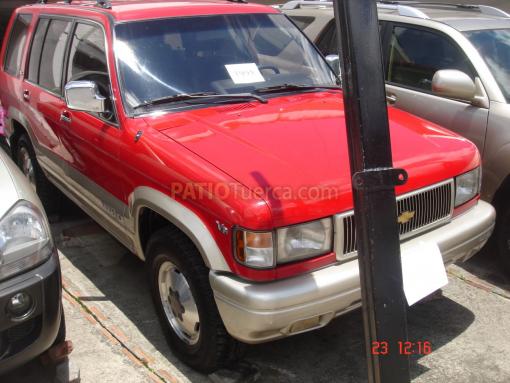

Very much wanting to expat to Ecuador, but have a Pit Bull dog my wife absolutely will not part with. I know Pits were on a “banned breed” list some years ago…. Are Pit Bulls still illegal in Ecuador?
Erik Morris
Howdy,
I see a lot of information here about dogs and cats, but we are considering a move to Ecuador and we have a parrot. Are there special regulations for birds? Can we bring her at all?
I’m interested in information about birds, too. We’ve got a Meyer’s parrot and are considering relocation within 18 months.
Does anyone know if there’s any way around getting 5 vaccinations and an internal and external parasite treatment for my elderly cat? She’s got some age-related health issues (nothing contagious), and her vet feels that all those toxins could be detrimental to her. I saw that it mentions age on the health form. I assume they were referring to not needing certain vaccines for very young kittens, but I wonder if it could also apply to an old, sick cat too.
We have just got to Quito Ecuador and let me tell you my dogs were keep from me, after we got here they keep them in a warehouse for about 22 hours no food or water because one of the shipping labels came off so to make a long story short for you it takes money, a lot of crying and a lot of paper work if you have dogs I would tell you Not to bring your dogs here it is a big different between here and the USA my dogs are still looking for grass.
How much money? What paperwork? How had you originally a fixed the label? Where they in their crates the whole 22 hours? Would flying into Gauyaquil be better idea? I’m coming quite soon, they have to come with me. I have heard nothing too negative about bringing pets until this. It is upsetting.
Yes in the create for 22 hrs no water or food and no walking the dogs and this is after the flight so you can add the flight hours to that so it was very bad for the dogs one Lab and one blue healer it was a very long trip for them.
I am bringing 5 dogs. All of their rabies shots JUST expired in October. I am taking them to the vet on 11/10/2013 to get their shots (so really they only have 10 days with an ‘expired’ rabies shot). The information says that dogs must have their rabies shots 60 days prior to entering Ecuador. If this is the case, then do I have to wait 60 days from getting their ‘renewal’ shorts? They get their shots every years. This year, I just got the notice last week that they were due? We want to spend Christmas in Cuenca but not without our dogs. Help! Donna
I AM FROM ECUADOR, MOVED TO THE USA 26 YEARS AGO…AND THIS IS THE REASON…..IT IS A CROOKED COUNTRY…..THEY WILL MAKE ANY EXCUSE TO GET MONEY OUT OF YOU…THEY HAVE NO RESPECT FOR THE PET OR THE OWNER.
It is now 2021. Curious as to your thoughts now regarding corruption, graft, and greed. Which country would you say is worse?
I have tried to call the number listed here for the relocation law firm but I believe it is out of service, do you know if they have a new number? I want to find out what the policy on exotic pets is, specifically for fennec foxes. It’s just a baby right now. It has been bottle fed and hand raised, very tame and very small, 3 lbs at most. I want to know if I can bring one in with proper documentation and vaccines.
Hi Miranda – the number works from within Ecuador. I haven’t called it from abroad but it should also work.
Obviously there are fees to transport your pet on the plane. Does Ecuador or the US charge any fees?
GOOD INFO RE PETS
I have a dog wondering if he will be quarantine for a any period of time?
Can I take my 2 cats on the plane with me, not putting them in cargo? in other words beside me while I travel? Carry on? or is there a ship to travel to Ecuador so they may be my side? One only weighs 4 lbs, other 11.
The restrictions are from the airline, you can sometimes put two small pets in the same under seat carrier. The carrier must go under the seat in front of you. You may NOT put them in the seat beside you even if you purchase the seat.
Russian Blues; cool! It is up to each air line whether they allow pets or not. Some allow pets in the cabins, some don’t. You must make a reservation for them as there are only a few pets allowed in each class of cabin. And you may be able to put both cats in one carrier but they’d have to have plenty of room to stand up and turn around; they are very very fussy about that these days. Pay attention to the carrier size allowed; it equates to the Medium sized Sherpa bag, NOT the Large! American Air charges $125 per carrier for inside the cabin. You will need an International Health Certificate specifically for Ecuador to get the pets into the country; American does not require a health cert. for pets travelling in the cabin. You don’t say where you will be traveling from…?? Here are the rules for American Air: Hope this helps.
Thank you very much for all the responses. My pets are my priority, and they never let me forget it either! lol..
Hi!
I’m considering moving to Ecuador and have a few cats to take with me. I was wondering if anyone knows the cost of each one for flights…papers to get into Ecuador etc.? I read one person was taking their dog and it was almost $2000! I would be flying to Miami from Toronto, staying there over night and leaving for Quito the next day to give them a break from the plane.
Thanks for any info!
American Airlines charges $175 per animal and you can only import two animals per person.
Hi Malcolm!
Thank you!
If my parents traveled over for a visit would they be able to bring 2 as well if they are visiting for a week or two and then I keep them here? I have five and must find a way to bring them all with me…they are my kids!
tammer1067@gmail.com
Thanks again!
Hello T.Marshall – Several weeks ago I read a post on Gringo
tree by a lady who came to Cuenca by herself with 3-4 pets.
She found an attorney with a pet import license who worked with another party to handle the paper work in S.F.Cal. It
might be the same one Bryan suggested. Worth a try. Please
let me know if you had success.I am coming to Cuenca 10/31
will avoid Miami because of high temp. (2 doggies) All the
best to you. Emily
The problem with using the pet import license is that you have to deal with the Ecuadorian Agriculture Ministry, which will give you a migraine. Depending on when you come, Miami is not problem heat wise. I brought my 2 dogs in June of 2012 and American would not board them on the 4 pm flight to Guayaquil because it was 86º But it cooled off and we got on the 7PM flight without a problem. I would avoid Miami in the late spring and summer, but Houston has the same problem. Late October in Miami should not be a problem, just check the historical temps in Miami for October.
I read all the info concerning bringing pets into Ecuador. Problem is the dates are from 2011 to 2015. Can someone give recent experiences bringing their pets to Ecuador? How are they at customs when you arrive? Has anyone had any problems in 2015? I have read all the laws and whatnot but want actual experiences. Can a friend bring in one of your ‘two’ pets so they can both travel in cabin? Do you need to have your pet in their name in order to do this? I do not want my other cat to go in luggage.
Thanks in advance
I want to bring my two 25lb dogs to ecuador with me.Do they have to be nuetered? They will be current on all vaccinations.My male is a purebred stud dog and I dont want to nueter him.Any info regarding this would be helpful. Thank you
Your dogs do NOT have to be Nuetered.
Neuter and spay ALL animals. Do you not know that dogs and cats are being killed in shelters and starving on the street because of too many? And you REALLY want to proliferate?! Please DO get a clue.
you are an idiot and should be spayed yourself.
Is there an organization of expats that can help with a move to Ecuador….I checked with one in Costa Rica and they have all the info to move and get settled in
Thanks
Not that I know of.
Hi Bryan!
We are moving to Ecuador with our pets. The last piece of the puzzle is this: we need transportation from Guayaquil airport to Gualaceo with our 6 suitcases and 2 pets. Can anyone suggest a van service that will make this trip for us?
Thanks for all you do!
Lollie
I am so happy to see someone else going to Gualaceo. I will be moving March 2013.
Susan from Houston
I brought my two dogs to Cuenca in May of 2012. It was quite an ordeal. First, American Airlines in Miami refused to check my dogs in on the original departure date of May 24 because the pet carriers were not of a type approved by American. They do NOT approve carriers with plastic clips holding the the two halves of the carrier together. American only approves of carriers that are held together with bolts all around the perimeter. They claim to have had problems with the carriers with the clips coming unfastened and have had pets loose in aircraft luggage compartments and in airport luggage storage areas. So, I had to drive back to my home in Vero Beach (140 miles) and exchange the carriers I had for the approved version at Petco. When I returned to Miami on May 26 for a 3PM flight, they would not check my dogs in because the outside temperature was 86º and 85º is the maximum temperature at which they will check pets in. I had to wait until about 4PM when is was 84º to check in with my dogs for a 7PM flight that departed at 8PM. I left home that day at 11am and finally arrived in Cuenca at 4:30am the next morning. The dogs had been their carriers for almost 11 hours and were a little dehydrated. Putting water in the little containers that come with the carriers does not work, it gets spilled very quickly. I would recommend moist food that will have some liquid in it instead of dry food.
If you freeze water in the little drinking dishes, it lasts much longer. (though not for 11 hours!) It does help though.
We have 2 dog both weigh about 70 lbs American airlines has a limit of 100lbs including the kennel. Has anyone shipped a dog over 100lbs total? Tks Russ
There is some misinformation being circulated on pets, so I spent several weeks gathering information on pet travel. This information was valid as of February 2012
The USDA will tell you that you have 10 days to take your pet to Ecuador. That is not correct. It even says on the USDA form #7001, that the certificate is good for 30 days and Ecuador has no such regulation. Some airlines have a 10 day rule but that is only for domestic travel and you don’t need the USDA form for that. You must mail or take the USDA form to an Ecuadorian Consulate and have it stamped and pay $50.00 If you are flying through either Miami or Houston, there are Ecuadorian consulates there.
LAN does not allow pets in the cabin. They have a special space in the baggage compartment for pets, but you must make a reservation at least 48 hours before, because the space is limited. American and Continental don’t require reservations and Continental has a pet boarding facility in Houston. American will NOT transport birds, but LAN and Continental will.
Ecuadorian customs states you can import 2 pets, that means 2 per person. If you are a family of 4, you can each import 2 pets. The regulation assumes one person with passport.
AS of October, 2012, the int’l health certificate DOES need to be done within 10 days of shipment! Quoting from the APHIS regulations for Ecuador: 1. The dog underwent a clinical examination by a licensed veterinarian. This examination should be within 10 days prior to shipment.
I would also like to point out that the rules for pets traveling in the cabin with passengers are quite different than for pets traveling in the Cargo hold. You don’t need to take the health cert. to the consulate if it’s in the cabin. (You do need to have it stamped & embossed by a USDA vet; in NC the nearest one was the state vet in Raleigh so it involved Next Day Air shipments each way) And after all your fuss and bother, half the time if it’s coming in the cabin with you, they don’t even glance at the paperwork you worked so hard to get!
Hi,
Do you know if it´s possible to find a pet insurance company in Cuenca? I know Quito has Alfapets, but they don´t have offices in Cuenca.
Sorry, I don’t know. I’ve never had pet insurance. I do know that pet care costs are low. Maybe you won’t need it?
Bryan,
I have a 2006 Yamaha VSTAR 1100 that I have done a lot of cusomizing on. It would mean a lot to get it to Cuenca. I would like to crate it up and send it in the shipping container with all of my other stuff. Will I have any problems doing that.?
Hi Rick – would be a great question for a lawyer. From how understand (and I’m not a lawyer) is that used vehicles are not allowed to be imported. A bike might be different. Would be worth checking with a lawyer.
HOLA BRYAN… just another question (lol) we are most likely going to move there now and we MAY take our 13 year old cats ( we can leave the cats with our college daughters but we are afraid they may not take care of the cats properly) so we called the airline about the rules etc…what I want to know is there any stores there that are “PET STORES” where we can buy pet food and litter……??? Thank you hope you are well…..Maria
Hi Maria – yes, there are specialty pet stores and the supermarkets also sell all the standard pet supplies as well. You won’t have any trouble finding what you need.
Thank you. I e-mailed them.
Hi! The link provided is for the USDA regulations. We're moving to Ecuador this coming summer. We're taking our dog w/us. Problem: How are we suppossed to get an import permit from the Ministry of Agriculture in Ecuador while we're here in the USA. I'm thinking that the provided link refers to exporting animas commercially. Any input on this? Thanks a lot.
Thats a good question. This is the information that the lawyer provided regarding personal pets. The best I can suggest, is to contact the law office. They can help explain – they may be able to help obtain the permit.Bryan
Thanks to Holly for her insight into bringing pets into Ecuador. I also appreciate the name, number and e-mail address of a law firm in Cuenca!! She even gives the name of an expat that works in the office as a contact to whom we can send emails, but though she gives the name…Rebecca McClesky, she doesn't give us Rebecca's e-mail address. Do you suppose you could get that info for us???? I have printed out this info and added it to my "Moving to Ecuador" book. It is great to find the name of a law firm, but to know that they have an expat employee is reassuring!! It would make me feel comfortable knowing someone there speaks English!!! Thanks again Holly!!
Hi Deb, You can contact Rebecca at gracevelastegui@yahoo.com – its the office email address.
Bryan
OK Thanks Bryan!! Will do!
Deb